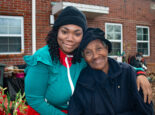Wetland protection – Safeguarding the South’s valuable wetlands
Wetland protection protects communities
Wetlands are vital to the South, protecting our communities in multiple ways.
When it rains, wetlands act like natural sponges that absorb flood waters, lowering flood levels and slowing the rise of waters downstream—a life-saving combination. Their natural flood protection is especially important to low-wealth communities and communities of color that historically have been pushed to less desired, more vulnerable low-lying inland areas. Wetland protection is even more critical as climate change brings increased flood risk events and more intense storms.
Explore marsh migration and how rising seas will impact our coast.
According to the Environmental Protection Agency, preserving and restoring wetlands can often provide the level of flood protection otherwise provided by expensive dredge operations and levees. A one-acre wetland can typically store about one million gallons of water, so when wetlands are destroyed, communities lose their best protection against flooding.
Hunters and anglers know that wildlife needs clean water and without it, there won’t be ducks to hunt or fish to catch. Folks who love our streams, rivers, and wetlands deserve clear clean water protections.
Tim Gestwicki, CEO of the North Carolina Wildlife Federation
Multiple benefits
Wetland protection protects our communities. Wetlands help buffer our communities from increasingly intense storms, act as natural pollution filters that improve our water quality, and protect wildlife as well as fish and shellfish for our fisheries.
Nearly all of the commercial catch and over half of the recreational harvest in the Southeast are fish and shellfish that depend on wetlands.
The South just isn’t the South without seafood and without its beautiful wetlands, from the Chesapeake Bay to eastern North Carolina to South Carolina’s Lowcountry to Georgia’s Okefenokee and salt marshes and Alabama’s Mobile-Tensaw. Wetlands are places to explore, boat, fish, and hunt, drawing tourists and hunters from our local communities and from across the country.
In addition to protecting our communities from flood risk and storms, wetlands help moderate global climate conditions. Wetlands store carbon within their plants and soil instead of releasing it to the atmosphere as heat-trapping carbon dioxide.
Saving wetlands
Despite their numerous benefits, wetland protection is under attack from multiple sources and we are working hard to save them with the help of communities across the South.
In an opinion issued on May 25, 2023 in Sackett v. EPA, the U.S. Supreme Court severely restricted the government’s ability to protect wetlands that shield families and communities across the South and the nation from storms and damaging floods, improve water quality, shelter wildlife, and feed our fisheries. The Southern Environmental Law Center, representing more than 110 environmental and community organizations, joined by the Natural Resources Defense Council, had urged the U.S. Supreme Court to uphold longstanding federal clean water protections.
Shortly after the Supreme Court decided Sackett v. EPA, the North Carolina legislature passed a law preventing the state from protecting wetlands beyond the significantly narrowed scope of federal protections leaving millions of acres of North Carolina’s wetlands at risk for pollution and destruction, its people more exposed to flooding and contaminated water, and fisheries and hunting in jeopardy.
Cutting valuable wetland protections at a time when our communities face increased storms and flooding from climate change defies all logic.
Highway and pipeline projects also can take a toll on wetlands and we are vigilant in ensuring these and other destructive projects minimize harms to wetlands.
Only if we work together and speak out for protecting wetlands, can we protect these valuable resources for years to come.



